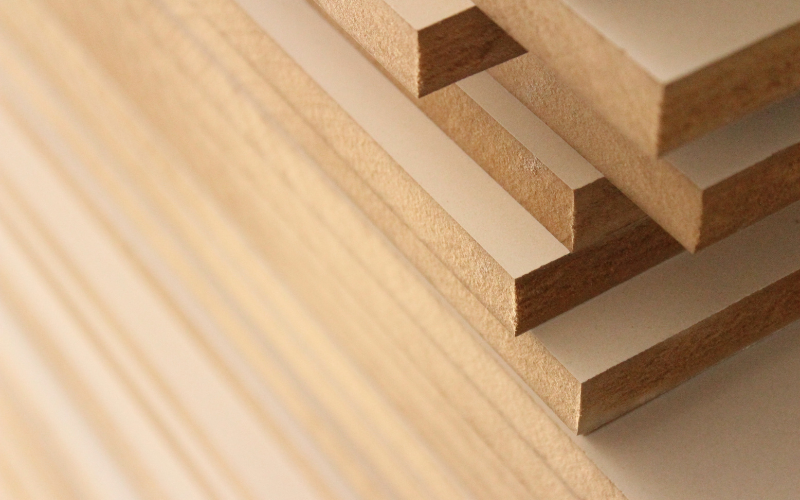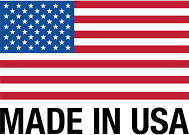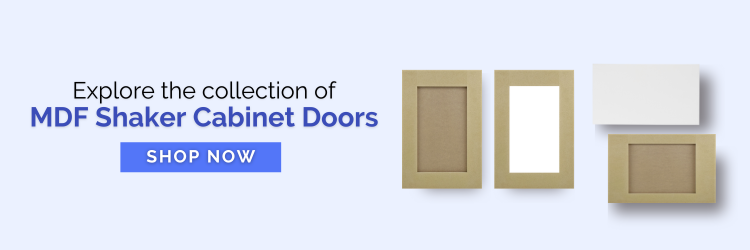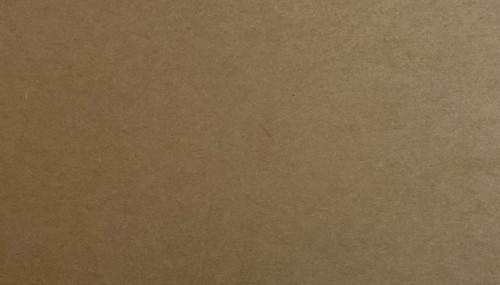MDF cabinet doors have become a reliable alternative to solid wood cabinet doors. Engineered to be durable and resistant to warpage, these doors are excellent for high-traffic kitchens and other areas of the home. Made of resin and tightly packed wood scraps, MDF cabinetry is also great for holding a paint job and refreshing a space. With all their advantages, there are many reasons to choose MDF vs. solid wood.
What Is MDF?
Medium-density fiberboard (MDF) is an engineered wood product formed by breaking down hardwood or softwood residuals into wood fibers. It has become one of the most popular wood composite materials, providing a strong, sustainable option formed using a resin binder and scrap wood particles.
These particles are separated uniformly to make a fine, consistent material that is heated and pressure steamed. The material is then bound with an adhesive and heat-pressed to produce a strong, solid board. This process makes MDF denser and heavier than most conventional woods. As a result of MDF's consistent composition, machining these materials with the right tools usually results in sharp, clean edges without burring or chipping.
Because the material is smooth, strong, and very dense, it makes an exceptional alternative for solid wood in many uses. Between the material’s strength and its smooth appearance, MDF replacement cabinet doors are an excellent choice.
MDF Shaker Glass-Ready Cabinet Door
Paintable MDF Slab Drawer Fronts
MDF vs. Solid Wood
MDF cabinetry has many of the same characteristics as natural wood but without many of its limitations. In many ways, MDF outperforms solid wood in the construction of painted cabinet doors. Traditional frame and panel solid wood doors consist of connecting five separate pieces: the four frame pieces and a center panel cut marginally smaller than the frame because of the need to float, or contract and expand, to prevent warping. Dense MDF is better at resisting warping.
Because of its construction, MDF also features no natural knots or grain patterns. The lack of grain makes it the perfect choice for painting, as it produces a very smooth finish when sprayed. However, some people may find the lack of grain to be a disadvantage, missing out on the natural appearance. For paint-grade cabinet doors, professionals typically use tighter-grained woods like poplar, soft maple, alder, pine, birch, and hard maple. MDF provides an effective alternative at a lower price point.
Unfortunately, though, you are not able to stain MDF like these woods because it will not absorb the stain. Solid wood is also better at holding screws and resisting surface scratches and dents. Still, MDF replacement cabinet doors offer plenty of upsides and can last just as long as solid wood doors, especially when properly sealed.

MDF Cabinet Doors Pros & Cons
Depending on your needs, MDF cabinetry can provide a viable replacement for solid wood. The pros and cons of MDF cabinet doors include:
Pros of MDF Cabinet Doors
-
They don’t expand and contract naturally, so they don’t crack or warp with humidity and temperature
-
Provide a smooth finish with no noticeable grain
-
Cheaper than solid wood
-
Easy to accept primers and paint finishes.
Cons of MDF Cabinet Doors
-
Core materials can become damaged due to extreme heat or swell when damaged by water
-
Not as strong as plywood or some solid woods
-
MDF is not as good at holding screws, and holes have to be predrilled to accept the screws.
Applications of MDF
MDF is used as the primary material for the panels in many of our raised and recessed panel /Paint-Grade cabinet doors. MDF cabinet door panels look, feel, and perform just like panels made of natural hardwood, so you can feel confident putting custom MDF cabinet doors in any part of your home. Popular options include:
-
Kitchen - Replace your existing kitchen cabinet doors to rejuvenate the space without a full renovation.
-
Bathroom - Install cabinet doors that can stand up to the steamy atmosphere inside your bathroom, as long as they are sealed properly.
-
Office – Install strong and stylish doors that will suit your office space over time.
-
Laundry Room - Give your laundry room more style by hanging MDF panel doors on the new or existing cabinets.
-
Commercial Space - Upgrade the ambiance inside a commercial space without having to make a major investment in replacement cabinet doors.
Finishing MDF Cabinet Doors
When you order MDF cabinet doors, you can choose to have the cabinet doors pre-primed, or pre-finished, or unfinished. Finished doors allow you to choose from a dozen professionally painted options, allowing you to put them up as soon as you receive them. Similarly, a veneer allows you to receive your doors with your preferred presentation.
Meanwhile, unfinished paint-grade MDF cabinet doors are excellent for homeowners, designers, and contractors that have a specific vision for a space in mind. You get all the advantages of MDF cabinet doors with the option to paint them your preferred color without settling for a limited number of colors and sheen.
People who plan to paint their doors often seek out MDF materials specifically because they deliver a professional-quality finish without needing extensive time or skill. However, keep in mind that MDF does not stain well since it has no grain and is not especially absorbent. If you prefer a natural-looking stain, consider real wood for your doors. Otherwise, MDF cupboard doors are an excellent, versatile option.
When working with MDF cabinetry, it is important to take proper safety precautions. Formaldehyde resins are commonly used to bind MDF materials since they are the best option. Therefore, MDF products emit urea-formaldehyde and other volatile organic compounds that can pose health risks at sufficient concentrations for at least several months after manufacturing.
Fortunately, the risk of formaldehyde resin emissions when the products are painted is considered negligible. It is a good idea to coat all sides of the piece in order to seal in the urea-formaldehyde. As a result, furniture and cabinet manufacturers have been utilizing MDF for several decades.
Order Your MDF Cabinet Doors Today from CabinetDoors.com
Add a touch of style and functionality to your home with durable MDF cabinet doors from CabinetDoors.com. Ordering new doors is easy—simply select your preferred wood type, enter your necessary width and height, choose your preferred finish, and have your custom-built doors shipped straight to your front door.
At CabinetDoors.com, we use high-quality MDF materials cut using advanced woodworking equipment for perfect precision. Homeowners, interior designers, and kitchen contractors rely on us to supply their custom-built cabinet doors because we offer a quality product at straight-from-the-manufacturer pricing. Start shopping MDF cabinet doors today by exploring our complete inventory, or contact us to learn more.
Frequently Asked Questions
Are MDF cabinet doors good quality?
Thoughtfully engineered using densely packed wood scraps, MDF cupboard doors are strong, high-quality, long lasting. Especially when sealed with a primer and properly finished, MDF is a high-quality alternative to solid wood.
Is MDF good for kitchen cabinets?
The dense construction of MDF cabinet doors makes them a great, reliable alternative to solid wood in standard kitchens. MDF kitchen cabinets are even more reliable when sealed with a primer and paint, as they are resistant to water, heat, and humidity.
Which is better MDF or plywood?
MDF is an excellent choice for cabinet doors and provides more options for styles and a smooth finish than plywood at a much more affordable price point. However, if you need highly damage-resistant cabinet doors, plywood is stronger and better for high-traffic areas.
What is the disadvantage of using MDF for cabinets?
The biggest disadvantage of using MDF is that the surface is vulnerable to scratches and dents. The material is also susceptible to water damage if not properly finished. The densely packed particles make the panels heavy and unable to hold screws very well.







